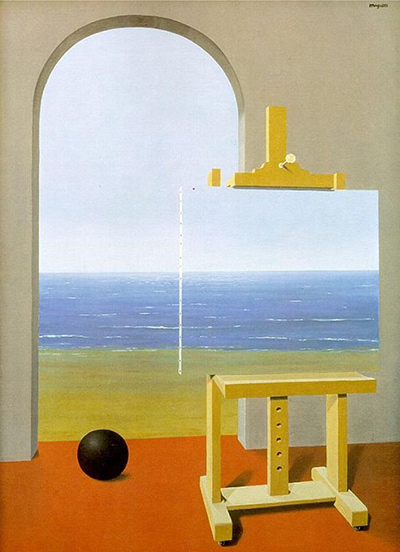The well-known Belgian born painter Rene Magritte greatly influenced the art world in his time. He was born on 21 November 1898 and died at the age of 68 on 15 August 1967.
The witty paintings he created had a resounding effect on the minimalist, conceptual and pop art scene. Magritte loved to take something common and place it into an unusual setting, which challenged the observer’s preconditioned view of the object. In his life, he became the leader of the surrealist movement through his work and visionary ideas.
Magritte created many notable pieces in his life such as The Portrait, The Son of Man, The Treachery of Images, Golconda and Elective Affinities.
The Human Condition II was another of his most notable works. It is known as the painting within a painting and carries with it a long tradition. He makes the observer aware of and indoor and outdoor space, which combine in this painting. He believed that this painting was a perfect example of how we often see the world as an outside element in our lives yet it is just a mental representation that we only experience within ourselves. The window, which is in the forefront of the painting, is representative of an observer’s eye and the house is the body of the person. It is from these places that we view the world around us.
In most of Magritte’s work, he did not paint an entire landscape. He opted instead to always paint a section of a wall, frame or windowsill. Some believe that he did this to stop himself from becoming too giddy. Another notable feature of the painting is how Magritte made the sea depicted on the canvas seemingly real while it actually concealed the real sea behind the painting. The edge of the canvas that separates the real sea from the canvas is finely balanced. The black sphere on the ground is the centre of the painting, even though it is not the actual centre of the image.




